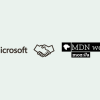
This is an excellent case study from Alice Lee on making Wordpress’ branding illustrations more inclusive.

This is an excellent case study from Alice Lee on making Wordpress’ branding illustrations more inclusive.
Kelly, Oscar, and I are getting ready to head out for a long weekend up in Gatlinburg, TN to take a break from house selling insanity and kick off the celebration of our 16-year anniversary. We love the Fall, but not everyone is equipped to take in the awesome beauty of Fall foliage. Thankfully, Tennessee is doing something about that.
disabled or readonly?Web forms are complex beasts. There are a lot of field types to remember, each with dozens of attributes. It’s hard to know which is the right way to go, especially when presented with a choice between two seemingly similar options for disallowing a field to be edited: disabled and readonly. TL;DR: If you really need it, which you probably don’t, readonly is what you want.

This is an excellent roll-up of coding best practices from Brandon Gregory.

This is great news! Microsoft, Google, the W3C, and Samsung are all joining Mozilla in the maintenance and curation of MDN. Finally, we’ll have one always up-to-date source of docs on web standards!

It‘s apparently a week for historical reading. I wrote about the history of CSS Grid, specifically, and Jason Hoffman wrote about the history of CSS writ-large.
Your knowledge and experience is valuable, no matter where you are in your career; you should share that knowledge with others. The web is what it is today because we shared our code and learned from each other. Be a part of that legacy. Brandon Gregory will show you the way.

Think you understand how array sorting works in JavaScript? Think again.

Excellent new piece from Manuel. So much great stuff to digest!
Nearly two decades ago, Kelly unravelled the mystery of my digestive tract that had eluded me for a number of years. It had become commonplace for me to get an upset stomach after eating. I didn’t think much of it really, but Kelly noticed a pattern: it only happened after meals that involved milk of some kind. “I bet you’re lactose intolerant.” Turns out she was right. Kind of.